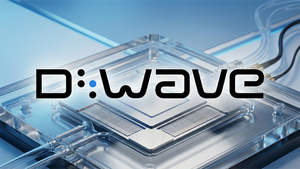
The financial markets are a constant ebb and flow, and recently, the tide has pulled several prominent companies down to their 52-week lows. Among them, real estate investment trust Douglas Emmett (NYSE: DEI) and medical device giant Zimmer Biomet Holdings, Inc. (NYSE: ZBH) stand out. Their recent stock performance reflects a confluence of sector-specific challenges, macroeconomic pressures, and evolving market dynamics. As of November 5, 2025, investors are scrutinizing these downturns, questioning whether these established players are signaling deeper troubles or if they present compelling buying opportunities for the discerning long-term investor.
The immediate implications of these 52-week lows are significant. For Douglas Emmett, it underscores the persistent struggles within the commercial real estate (CRE) sector, particularly the office market, which continues to grapple with the lingering effects of hybrid work models and elevated interest rates. For Zimmer Biomet, the dip highlights the delicate balance between strategic growth initiatives, such as acquisitions, and managing short-term financial guidance amidst a dynamic healthcare landscape. Both companies, despite their differing industries, find themselves at a critical juncture, prompting a closer examination of the forces driving their valuations.
Unpacking the Downturn: Specifics Behind the Slide
Douglas Emmett's recent journey to its 52-week low is largely a narrative of the beleaguered office real estate market. The company, primarily focused on Class A office and luxury multifamily properties in high-barrier-to-entry coastal submarkets of Los Angeles and Honolulu, has been hit hard by several factors. The most prominent is the weak office market fundamentals, with leasing demand remaining soft and occupancy rates directly impacting revenues. As of Q4 2024, its office portfolio was only 80.9% leased, a decline from the previous year, with overall office demand still approximately 30% below pre-pandemic levels. This persistent trend has exerted significant downward pressure on property values and rental income.
Compounding this challenge are higher borrowing costs and the impact of elevated interest rates. While interest rates may have plateaued in late 2024, they remain historically high in late 2025, leading to increased interest expenses for REITs like Douglas Emmett. Approximately 50% of the company's debt is at a floating rate, meaning higher rates directly impact its profitability. The company's third quarter 2025 financial performance further illustrates these pressures, reporting a net loss attributable to common stockholders of $11 million, or -$0.06 per share, a stark contrast to a net income of $5 million in Q3 2024. Funds From Operations (FFO) per share, a key metric for REITs, also decreased to $0.34 in Q3 2025 from $0.43 in the same period last year, leading to a narrowed full-year 2025 FFO guidance.
Zimmer Biomet's dip towards its 52-week low, hovering around $88.67 in May 2025, was primarily triggered by a narrowing of its full-year 2025 Adjusted Earnings Per Share (EPS) guidance. The revised forecast, from an earlier $8.15-$8.35 to $7.90-$8.10 per share, incorporated the anticipated impact of tariffs and the integration costs associated with its acquisition of Paragon 28, Inc. Earlier pressures in mid-2024, stemming from soft growth, poor cash flows, and higher interest rates, had already set the stage for vulnerability. While the company reported strong Q3 2025 net sales of $2.001 billion, a 9.7% increase year-over-year, this slightly missed analyst estimates. Despite beating adjusted diluted EPS expectations at $1.90, the slight revenue miss and the cautious outlook on international markets further fueled investor apprehension, contributing to a year-to-date stock decline of about 2.3% as of early November 2025.
Winners, Losers, and Market Implications
The current market conditions paint a complex picture for both Douglas Emmett (NYSE: DEI) and Zimmer Biomet (NYSE: ZBH). For Douglas Emmett, the weakness in the office sector positions it as a significant 'loser' in the short to medium term. Its business model, which relies heavily on leasing Class A office space, is directly challenged by reduced demand and higher vacancy rates. While its strategy of focusing on supply-constrained, high-barrier-to-entry submarkets and its luxury multifamily portfolio offers some resilience, the sheer scale of the office market's struggles overshadows these strengths. The ongoing shift to hybrid work means that even Class A properties are facing headwinds, albeit less severe than lower-tier buildings. The higher cost of capital also impacts its ability to acquire new properties or undertake significant developments, potentially slowing growth. However, for investors with a long-term horizon and a high-risk tolerance, Douglas Emmett's discounted valuation and its focus on premium assets in desirable locations could present a speculative buying opportunity if the office market stabilizes and interest rates eventually decline.
Zimmer Biomet, conversely, presents a more nuanced case. Despite hitting a 52-week low, its robust and innovative product portfolio, particularly in orthopedics, robotics, and infection solutions, positions it as a potential 'winner' in the long run. The company's core segments like knee and hip solutions, alongside its expanding presence in spine, trauma, and sports medicine, cater to an aging global population, a powerful demographic tailwind. Recent strategic moves, such as the acquisition of Monogram Technologies to bolster its robotics platform and the FDA Breakthrough Device Designation for its iodine-treated total hip replacement system in October 2025, demonstrate a commitment to innovation and market leadership. The short-term pressure from narrowed guidance and integration costs might be seen as temporary setbacks against a backdrop of strong underlying demand for orthopedic procedures and advanced medical technologies. For investors, the current dip might represent a buying opportunity to acquire a market leader with a strong pipeline and long-term growth drivers at a more attractive valuation, provided the integration of acquisitions proceeds smoothly and international market weaknesses are addressed.
Broader Significance and Industry Ripple Effects
The struggles of Douglas Emmett (NYSE: DEI) are indicative of the wider paradigm shift occurring in the commercial real estate (CRE) sector. The "flight to quality" trend means that while Class A properties like those Douglas Emmett owns are faring better than Class B and C assets, even they are not immune to increased vacancy rates, which are projected to reach 24% by 2026 for the overall office market. This event highlights the urgent need for CRE companies to adapt, with many exploring office-to-residential conversions or enhancing amenities to attract tenants. The elevated interest rate environment has also created a ripple effect, increasing financing costs across the entire REIT sector and making new developments or refinancings more challenging. Historically, periods of high interest rates have often led to valuation compression for income-generating assets like real estate, and the current situation is no exception. However, some industry experts anticipate a stabilization and modest recovery for the office market in late 2025, with more substantial improvement in 2026-2027, driven by reduced new construction and a gradual return-to-office trend.
For Zimmer Biomet (NYSE: ZBH), its performance reflects key trends in the medical technology and orthopedic industry. The rapid adoption of robotics and AI in orthopedics is a significant driver, with systems like ROSA enhancing surgical precision and outcomes. Zimmer Biomet's strategic acquisitions, such as Monogram Technologies, directly align with this trend, indicating a commitment to staying at the forefront of surgical innovation. Another major trend is the shift of orthopedic procedures to Ambulatory Surgery Centers (ASCs), driven by cost-effectiveness. This necessitates medtech companies to develop streamlined and efficient solutions for these environments. Furthermore, advancements in materials science, exemplified by Zimmer Biomet's iodine-treated implants aimed at preventing infections, are crucial for improving patient outcomes. A potential long-term ripple effect to watch is the impact of GLP-1 drugs for weight loss; while some speculate they could reduce the volume of obesity-related orthopedic procedures, many industry leaders believe the aging population will continue to provide a strong tailwind for demand.
What Comes Next: Navigating the Future
For Douglas Emmett (NYSE: DEI), the immediate future hinges on the stabilization and eventual recovery of the office market. Short-term possibilities include continued pressure on rental income and occupancy, but long-term, the company's focus on prime, supply-constrained submarkets could position it for a stronger rebound when demand returns. Strategic pivots will be crucial, such as accelerating capital improvements to enhance property appeal, exploring further office-to-residential conversions where feasible, and optimizing its multifamily portfolio, which has shown consistent strong performance. The trajectory of interest rates will also be a key determinant; any future rate cuts could significantly reduce borrowing costs and improve property valuations, presenting a market opportunity. Potential scenarios range from a protracted slump in office demand, further eroding valuations, to a gradual but steady recovery driven by companies enforcing return-to-office mandates and a renewed appreciation for high-quality, amenity-rich workspaces.
Zimmer Biomet (NYSE: ZBH) is poised to continue its growth trajectory, albeit with some near-term integration challenges. Short-term, the company will need to effectively integrate its recent acquisitions, particularly Paragon 28, and navigate the weakness in some international markets that led to narrowed guidance. Long-term, its investment in robotics and digital technologies (like the ROSA systems and Monogram acquisition) and innovations in infection prevention (such as the FDA Breakthrough Device designated iodine-treated hip system) are expected to drive sustained growth. Market opportunities include expanding its global footprint, particularly in emerging markets, and further developing its portfolio for the growing ASC segment. Potential strategic adaptations might involve refining its sales channels for international markets and accelerating R&D in areas like personalized medicine. Scenarios include continued leadership in orthopedics driven by innovation, or a more competitive landscape requiring even greater agility in product development and market penetration.
Comprehensive Wrap-up: A Market in Transition
The recent 52-week lows for Douglas Emmett (NYSE: DEI) and Zimmer Biomet (NYSE: ZBH) serve as potent reminders of a market in transition. For Douglas Emmett, the key takeaway is the profound and ongoing disruption in the commercial office real estate sector, exacerbated by high interest rates. While its focus on Class A assets in prime locations offers some buffer, the sector requires significant adaptation. For Zimmer Biomet, the dip highlights the complexities of growth through acquisition and navigating global market dynamics, even for a company with a strong product pipeline and favorable demographic tailwinds.
Moving forward, the market will closely watch several factors. For Douglas Emmett, investors should monitor office occupancy rates, rental growth in its key submarkets, and any shifts in interest rate policy that could alleviate financing pressures. Any news on successful office-to-residential conversions or significant new leasing activity would be positive signals. For Zimmer Biomet, investors should track the successful integration of acquisitions, performance in international markets, and the continued adoption of its innovative products, especially in robotics and infection control. The broader impact of GLP-1 drugs on orthopedic procedure volumes will also be a long-term watch item.
Ultimately, these companies represent two distinct facets of the current financial landscape: one grappling with a fundamental shift in its core business model, and the other navigating strategic expansion within a robust but competitive industry. While their recent lows may signal caution, they also underscore the dynamic nature of market valuations and the potential for recovery or continued growth for companies that can effectively adapt to evolving conditions.
This content is intended for informational purposes only and is not financial advice

















